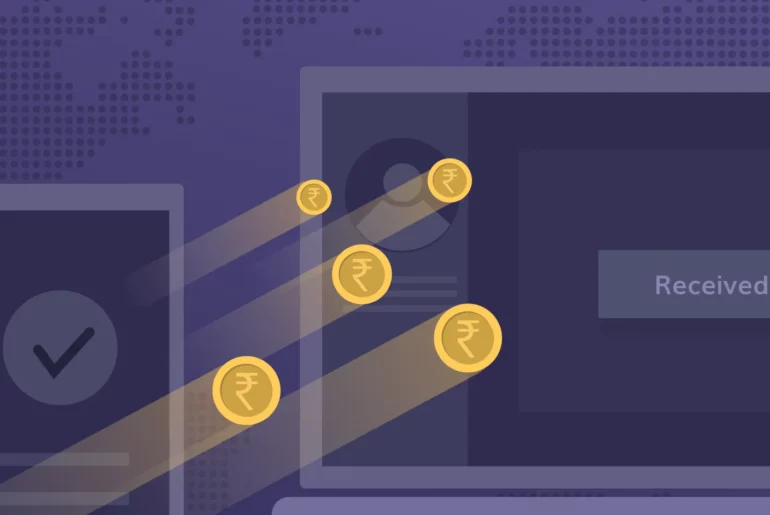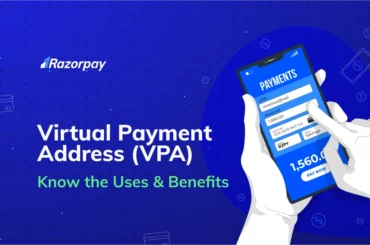RTGS, short for Real-Time Gross Settlement is a real-time payment system that allows instant electronic money transfers between bank accounts in India. RTGS transactions are settled one by one, without combining debits and credits in a central bank’s records. RTGS is used for high-value payments, interbank transfers and financial market settlements. RTGS transfer reduces settlement risk, as payments are final and irrevocable.
To initiate an RTGS bank transfer, you need the recipient’s bank account number and the Indian Financial System Code (IFSC) code of their branch.
The minimum amount for an RTGS money transfer is Rs 2 lakhs, with no maximum limit. However, you must initiate the transfer within the specified RTGS timings to ensure prompt processing.
Table of Contents
Required Details for RTGS Transaction
You will need the following details for the RTGS transaction:
-
Sender’s Account details like your account number and the branch IFSC code from which you wish to transfer the funds
-
Beneficiary’s Account details, like beneficiary’s account number, bank name, and branch’s IFSC code
-
The amount you want to transfer
-
Purpose of transfer
How to transfer funds using RTGS?
To initiate an RTGS transfer:
-
You must provide your bank with the beneficiary’s bank account details, including their name, account number, and IFSC code.
-
Ensure that you have adequate funds in your account to cover the transfer amount.
-
Contact your bank or check for the branch RTGS timings; you can transfer only during specified hours.
-
Once you have submitted the necessary information, your bank will process the transfer and send the funds to the recipient’s bank in real-time.
It is important to double-check all details before confirming the transaction to ensure a successful RTGS money transfer.
Carrying out Online RTGS Fund Transfer
Login to Netbanking
As a consumer, you must first open the net banking site for the bank that operates your funding account and then log in to the net banking account by providing all the credentials
Go to the transfer option and select RTGS
The second step is to go to the fund transfer section. To transfer funds through this method, you must select the RTGS option at this stage
Add beneficiary
The third and most critical step is to select the beneficiary who will be receiving the transferred funds when the transaction is complete. Here, you must provide the name, account number, type of account, bank name, branch name, IFSC code, and phone number of the beneficiary.
Fill in the amount
After filling in the details of the beneficiary, you must fill in the amount of money that needs to be transferred. Usually, during RTGS fund transfers, the amount is higher than Rs 2 lakh. Make sure that the amount filled is accurate because RTGS transfers are settled once and are irrevocable
Complete the transaction with the transaction password
Finally, enter your password to authorise the transaction, after which the request will be submitted and the transfer will be processed
Carrying out Offline RTGS Fund Transfer at the Bank
Visit the bank
First, you must visit the bank branch that operates your funding account.
Fill out the RTGS form with relevant information (Number, Name & IFSC Code)
At the bank branch, you need to ask for an RTGS form, as it is compulsory to fill one to submit a request for an RTGS fund transfer. In this form, fill in all the details of the beneficiary. Check these details carefully to ensure they are correct.
Hand over a cheque to the bank employee
If you choose an offline method for RTGS fund transfer, you must carry a cheque to the bank. The cheque will be for the amount you wish to transfer to the beneficiary. After filling out the form at the bank, hand over this cheque to the bank employee.
Ask for UTR Number for reference
After giving the cheque, the bank employee will submit and process the request on the online system. This generates a Unique Transaction Reference number, which is given to you to help you track the transaction.
How to Fill RTGS Form
To fill out an RTGS form, you need to follow these steps:
-
Download the RTGS form from your bank’s website or get it from your nearest branch.
-
Fill in the details of the applicant (remitter), such as name, account number, type of account, customer ID, address, phone number, email ID, and PAN number.
-
Fill in the details of the beneficiary, such as name, account number, type of account, bank name, branch name, IFSC code, and phone number.
-
Fill in the amount to be remitted in words and figures.
-
Fill in the sender-to-receiver information, if any. This is an optional field where you can mention the purpose or reason for the transfer.
-
Submit the form along with a cheque or cash to your bank branch.
Essential Points to Keep in Mind When Completing the RTGS Transfer Form
-
When initiating a payment through RTGS, there are several essential points to keep in mind to ensure a successful transaction. Firstly, adhering to the guidelines set by the Reserve Bank of India (RBI) for RTGS transactions is essential. These guidelines include providing accurate beneficiary details such as the name, bank account number, account type, bank name, and IFSC code.
-
Additionally, it is crucial to ensure that the designated account receives the payment. Double-checking the beneficiary details before initiating the transfer can help avoid errors or delays.
-
Another important consideration is understanding the applicable charges and taxes from the remitter’s account. Verifying these charges with your bank or financial institution before initiating an RTGS transfer is recommended.
-
Lastly, each transaction made through RTGS is allotted a unique UTR number. This 22-character long code helps in identifying and tracking individual transactions.
-
By keeping these essential points in mind while completing the RTGS transfer form, you can ensure a seamless and accurate fund transfer process.
RTGS Timings
The online RTGS service in India is available round the clock 24×7 and 365 days a year from December 14, 2020.
You don’t have to visit the bank to make an RTGS fund transfer, However, if you want to do RTGS transactions offline at a bank branch, you need to check the timings of the branch.
Earlier, RTGS services were available for customers from 7 a.m. to 6 p.m. on all working days of the week, except the second and fourth Saturdays of every month.
-
Monday to Friday, and the timings are 10 AM to 3:30 PM
-
Saturday (except 2nd and 4th): 10 AM to 3:30 PM
-
Sunday and public holidays: Closed
RTGS Charges
|
Type of Transaction |
Charges Applicable |
|
Inward transactions |
No charges |
|
Online transactions (Internet/Mobile Banking) |
No charges |
|
Outward transactions (amount = Rs. 2 lakh – Rs. 5 lakh) |
Rs 30 |
|
Outward transactions (amount < Rs. 5 lakh) |
Rs. 55 |
Related Read: What Are RTGS Charges? – Check RTGS Transfer Charges in 2025
Advantages of RTGS Transactions
Many users prefer RTGS transfer for its numerous advantages. Firstly, it offers a safe and secure mode of transferring funds. With encryption and authentication protocols in place, your transactions are protected from unauthorized access. Secondly, RTGS is available 24/7, allowing you to initiate transfers at any time convenient for you. There’s no need to visit a bank physically, as you can perform the transfer online. Moreover, RTGS enables real-time settlement of funds, ensuring prompt completion of transactions. Lastly, it is an ideal option for high-value transfers or large business transactions due to its high transaction limit.
Conclusion
RTGS transfers allow seamless and prompt electronic monetary transfers between banks or financial institutions. To initiate an RTGS transfer, you can choose between online and offline methods. Online transfers require active internet banking, while offline transfers can be done at an RTGS-enabled bank branch. Both methods ensure secure and efficient fund transfers. Take advantage of the benefits of RTGS transfers for large business transactions, interbank transfers, or high-value transactions.
Related Read: What is TPT Transfer in Banking? – Methods, Limit & Fees
Frequently Asked Questions
How long does an RTGS transfer take?
The processing time for an RTGS transfer is usually immediate or takes a maximum of 30 minutes.
How much can be transferred by RTGS?
There is no upper limit for RTGS transfers, making it suitable for high-value transactions.
Is RTGS transfer immediate?
Yes, if there is no server downtime, the funds are transferred immediately.
Can an RTGS take 2 days?
RTGS transactions typically do not take 2 days to complete.
How do I check my RTGS status?
To check your RTGS status, you can either contact your bank’s customer service or log in to your Internet banking account and check the transaction history.
Can RTGS be delayed?
RTGS transfers can be delayed due to various reasons, such as technical glitches, network issues, or insufficient funds.



